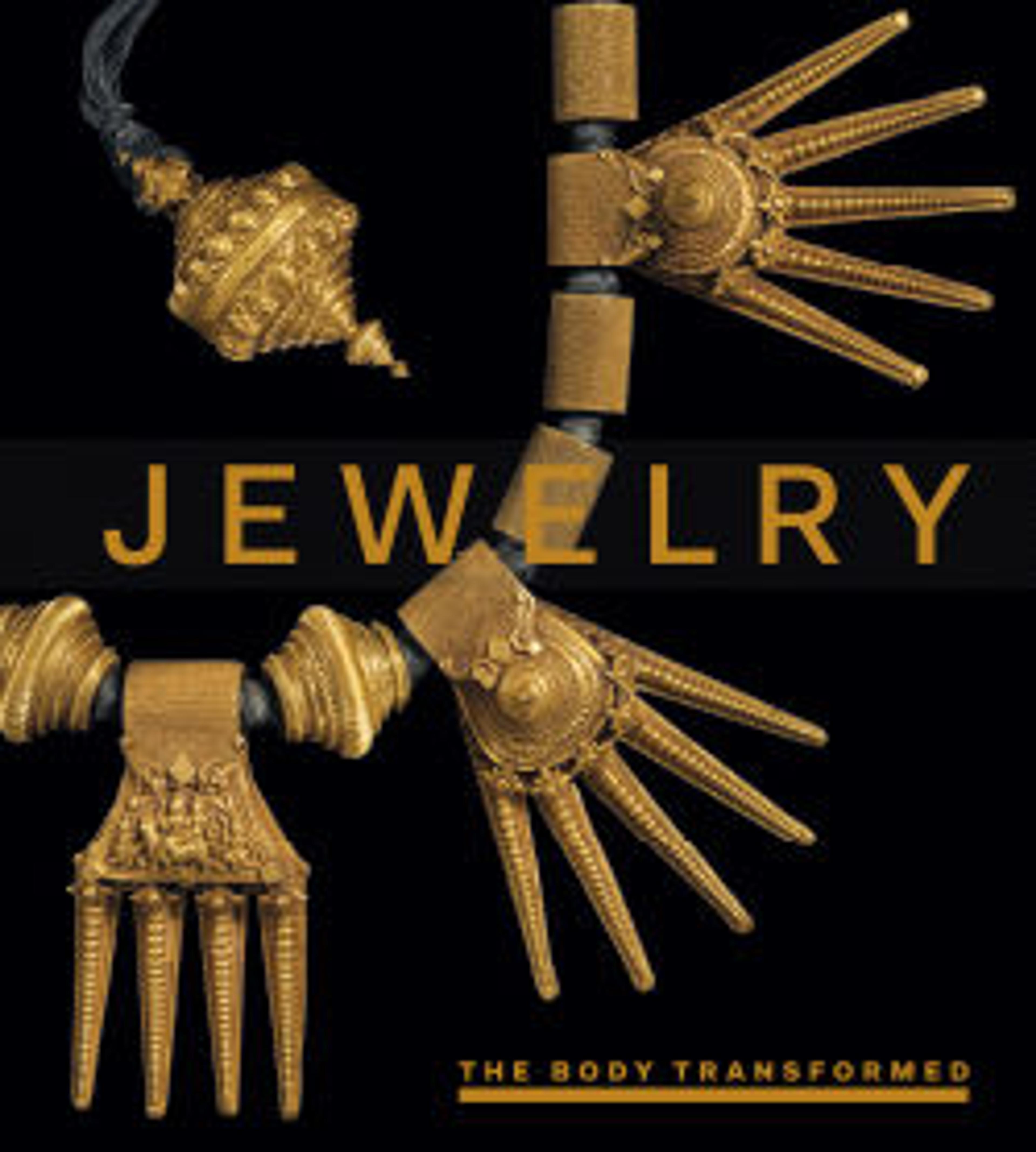Arm ornament
Beginning in the last century before the Common Era, and continuing on until the ninth century, master metalsmiths in what is now southwestern Colombia created remarkable full-body regalia for powerful leaders to wear in life, and also in death. These included ear ornaments, headdress diadems, pectorals, and tweezer-like objects that are thought to have been worn suspended from a cord tied around the upper arm. Sometimes called brazeletes in Spanish, this impressive example boasts an embossed face, bilateral flanges, and a crescent-shaped blade at the base.
The conventionalized visage rendered in high relief on this ornament, often called the “Yotoco Face,” is characteristic of this period, and is also found on pectorals and diadems (see 1979.206.507). The face itself is adorned with other ornaments, including an H-shaped nose ornament—itself bearing a face rendered in low relief—and large, circular ear pendants. Yotoco (100 BCE – 800 CE) was the second of three cultures identified archaeologically in the Cauca Valley. Along with the earlier Ilama, and the later Sonso, these three societies are known collectively as the Calima culture.
Ornaments such as this example were created by hammering gold into a sheet, and then cutting it into the desired shape. The metalsmith would then add details by working the sheet from the reverse using a bone or metal tool over a soft material. Elements such as the conventionalized face were likely achieved by hammering the sheet over a form.
Although this object is most often called an arm ornament, the presence of a simpler face rendered in low relief on the reverse side, however, calls into question its exact function, as the presence of two faces may suggest it was meant to be seen from both sides. Although seemingly a curious form of decoration to modern viewers, tweezerlike ornaments were a common symbol of power and authority throughout the western reaches of the ancient Americas.
Further Reading
Pérez de Barradas, José. Orfebrería Prehispánica de Colombia Estilo Calima. Bogotá, Colombia: Banco de la República, 1954.
Bray, Warwick. 2005. “Craftsmen and Farmers: The Archaeology of the Yotoco Period.” In Calima and Malagana: Art and Archaeology in Southwestern Colombia, edited by Marianne Cardale de Schrimpff, pp. 98−139. Bogotá: Pro Calima Foundation.
Pillsbury, Joanne, Timothy Potts, and Kim N. Richter, eds. Golden Kingdoms: Luxury Arts in the Ancient Americas. Los Angeles: J. Paul Getty Museum, 2017. See especially no. 83.4, pp. 182–183.
Uribe Villegas, María Alicia, and Marcos Martiñon-Torres, "Metallurgy and Prestige in Ancient Colombia," in Golden Kingdoms: Luxury Arts in the Ancient Americas, Joanne Pillsbury, Timothy Potts, and Kim N. Richter, eds., pp. 44-53. Los Angeles: J. Paul Getty Museum, 2017
The conventionalized visage rendered in high relief on this ornament, often called the “Yotoco Face,” is characteristic of this period, and is also found on pectorals and diadems (see 1979.206.507). The face itself is adorned with other ornaments, including an H-shaped nose ornament—itself bearing a face rendered in low relief—and large, circular ear pendants. Yotoco (100 BCE – 800 CE) was the second of three cultures identified archaeologically in the Cauca Valley. Along with the earlier Ilama, and the later Sonso, these three societies are known collectively as the Calima culture.
Ornaments such as this example were created by hammering gold into a sheet, and then cutting it into the desired shape. The metalsmith would then add details by working the sheet from the reverse using a bone or metal tool over a soft material. Elements such as the conventionalized face were likely achieved by hammering the sheet over a form.
Although this object is most often called an arm ornament, the presence of a simpler face rendered in low relief on the reverse side, however, calls into question its exact function, as the presence of two faces may suggest it was meant to be seen from both sides. Although seemingly a curious form of decoration to modern viewers, tweezerlike ornaments were a common symbol of power and authority throughout the western reaches of the ancient Americas.
Further Reading
Pérez de Barradas, José. Orfebrería Prehispánica de Colombia Estilo Calima. Bogotá, Colombia: Banco de la República, 1954.
Bray, Warwick. 2005. “Craftsmen and Farmers: The Archaeology of the Yotoco Period.” In Calima and Malagana: Art and Archaeology in Southwestern Colombia, edited by Marianne Cardale de Schrimpff, pp. 98−139. Bogotá: Pro Calima Foundation.
Pillsbury, Joanne, Timothy Potts, and Kim N. Richter, eds. Golden Kingdoms: Luxury Arts in the Ancient Americas. Los Angeles: J. Paul Getty Museum, 2017. See especially no. 83.4, pp. 182–183.
Uribe Villegas, María Alicia, and Marcos Martiñon-Torres, "Metallurgy and Prestige in Ancient Colombia," in Golden Kingdoms: Luxury Arts in the Ancient Americas, Joanne Pillsbury, Timothy Potts, and Kim N. Richter, eds., pp. 44-53. Los Angeles: J. Paul Getty Museum, 2017
Artwork Details
- Title: Arm ornament
- Artist: Calima (Yotoco) artist
- Date: 100 BCE–800 CE
- Geography: Colombia, Calima River region
- Culture: Calima-Yotoco
- Medium: Hammered gold
- Dimensions: H. 10 5/8 × W. 7 × D. 3 in. (27 × 17.8 × 7.6 cm)
- Classification: Metal-Ornaments
- Credit Line: Gift and Bequest of Alice K. Bache, 1974, 1977
- Object Number: 1974.271.51
- Curatorial Department: The Michael C. Rockefeller Wing
More Artwork
Research Resources
The Met provides unparalleled resources for research and welcomes an international community of students and scholars. The Met's Open Access API is where creators and researchers can connect to the The Met collection. Open Access data and public domain images are available for unrestricted commercial and noncommercial use without permission or fee.
To request images under copyright and other restrictions, please use this Image Request form.
Feedback
We continue to research and examine historical and cultural context for objects in The Met collection. If you have comments or questions about this object record, please contact us using the form below. The Museum looks forward to receiving your comments.
